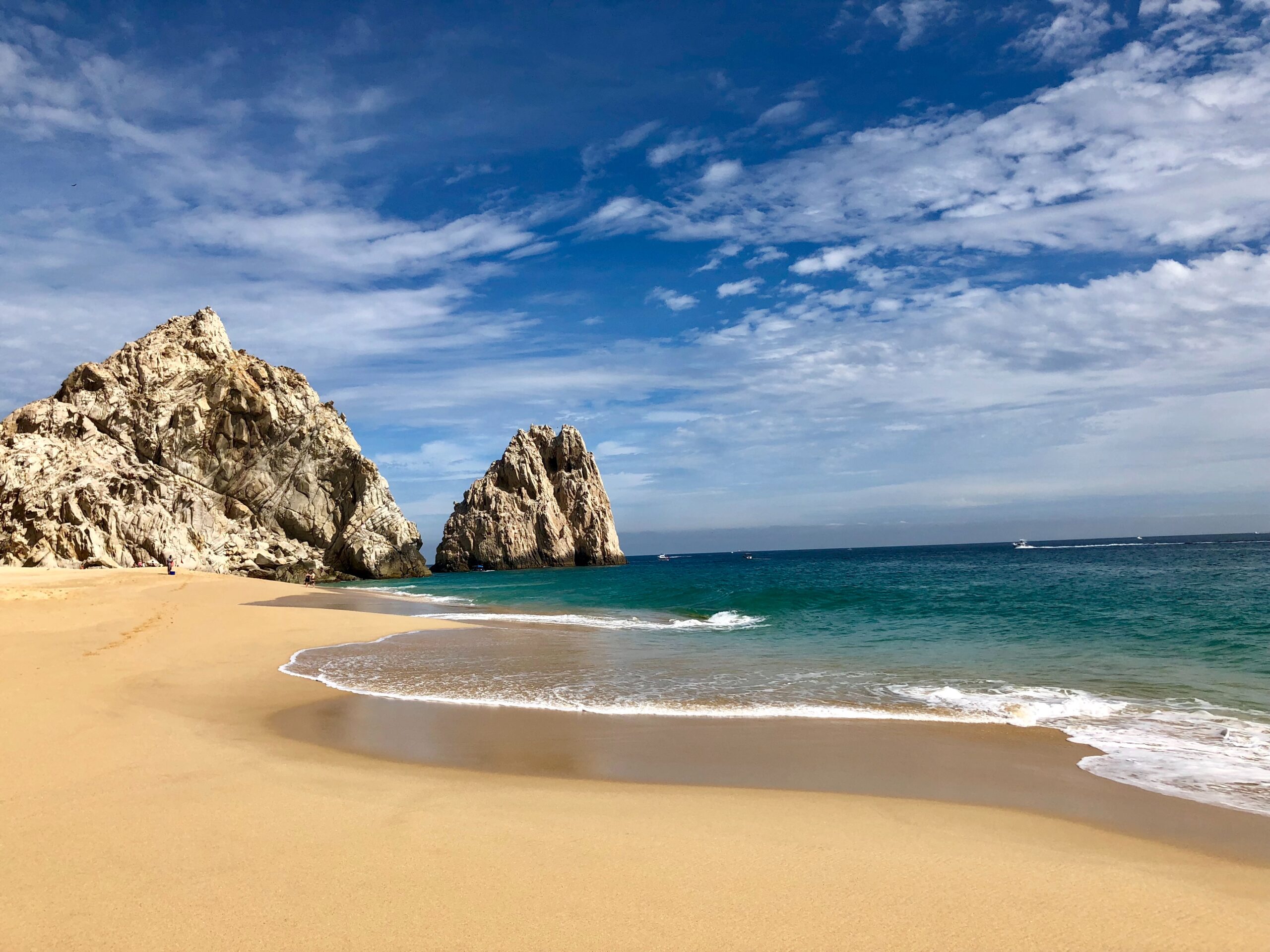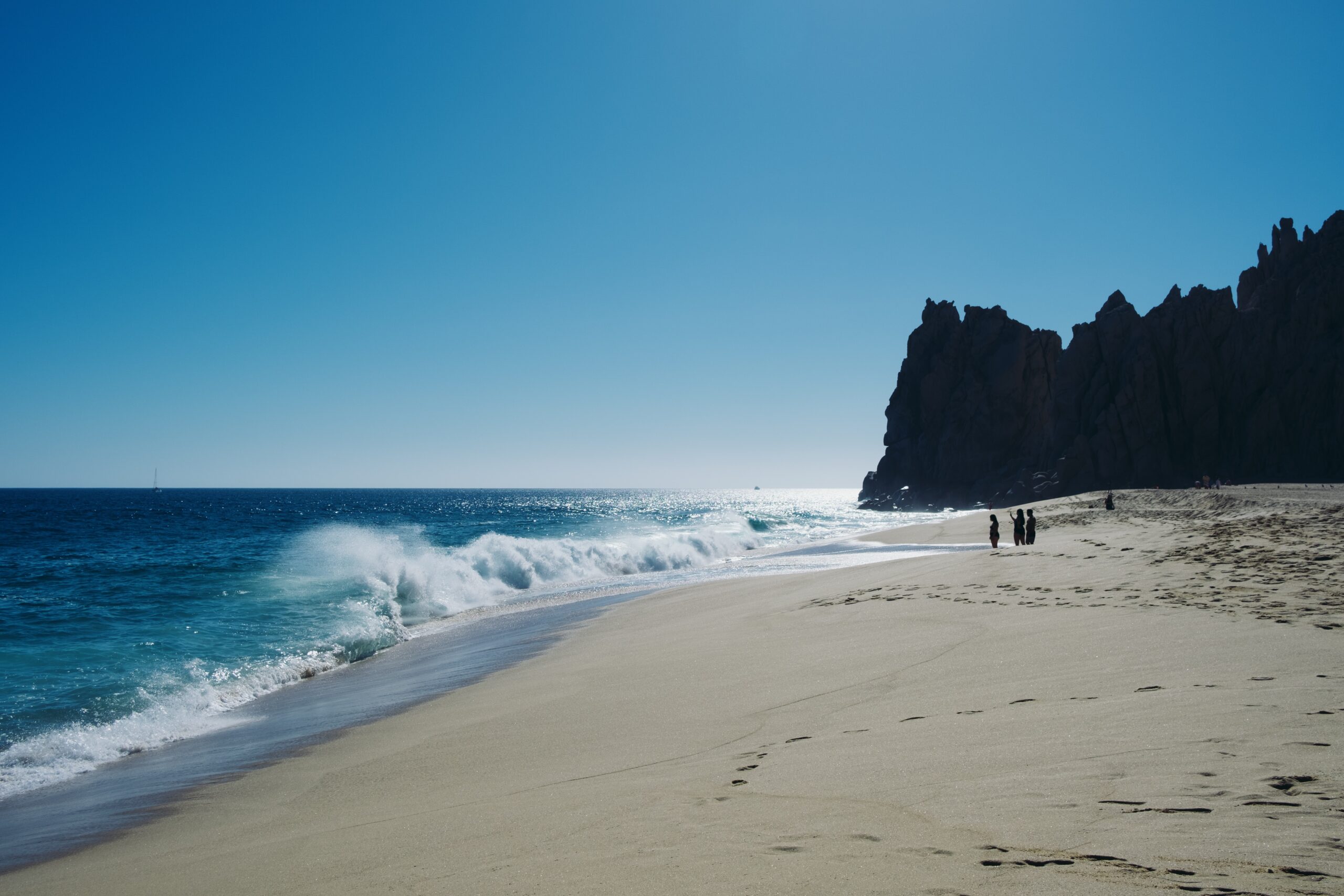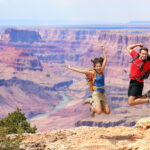The waters around Los Cabos are incredibly biodiverse. They hold wonders that can’t be seen anywhere else on earth and the beautiful El Arco and Lover’s Beach
At the very southern tip of Baja California stands a natural arch that has become an icon of Los Cabos. Known as El Arco, it marks the point where the Pacific Ocean meets the Gulf of California. El Arco at Land’s End and Lover’s Beach beside it are a beautiful golden color, especially at sunset, and an excellent spot to snap some pictures.
The Gulf of California, also known as the Sea of Cortez, is home to a lot of sea life. Because of its location at the confluence of a number of marine currents, it was nicknamed the Aquarium of the World by the adventurer Jacques Cousteau. You will take a glass-bottomed boat on your Gray Line tour to the Arch, which will allow you to see the coral reefs and all the fish that call these home, whale sharks and turtles, and beaches covered in sea lions.
What to See and Do at Lover’s Beach in Los Cabos
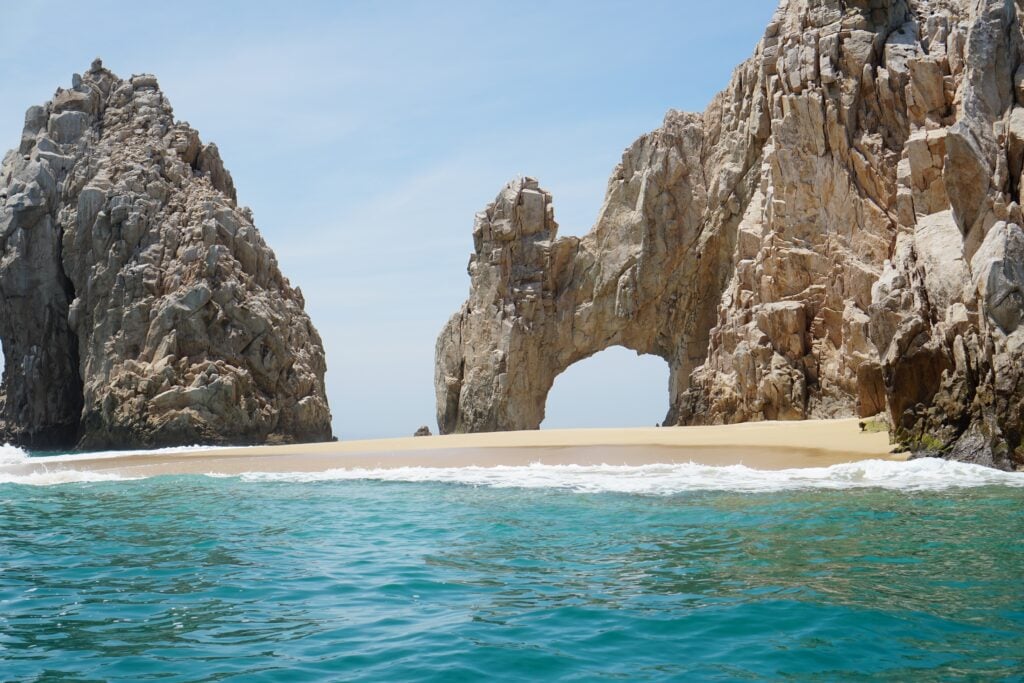
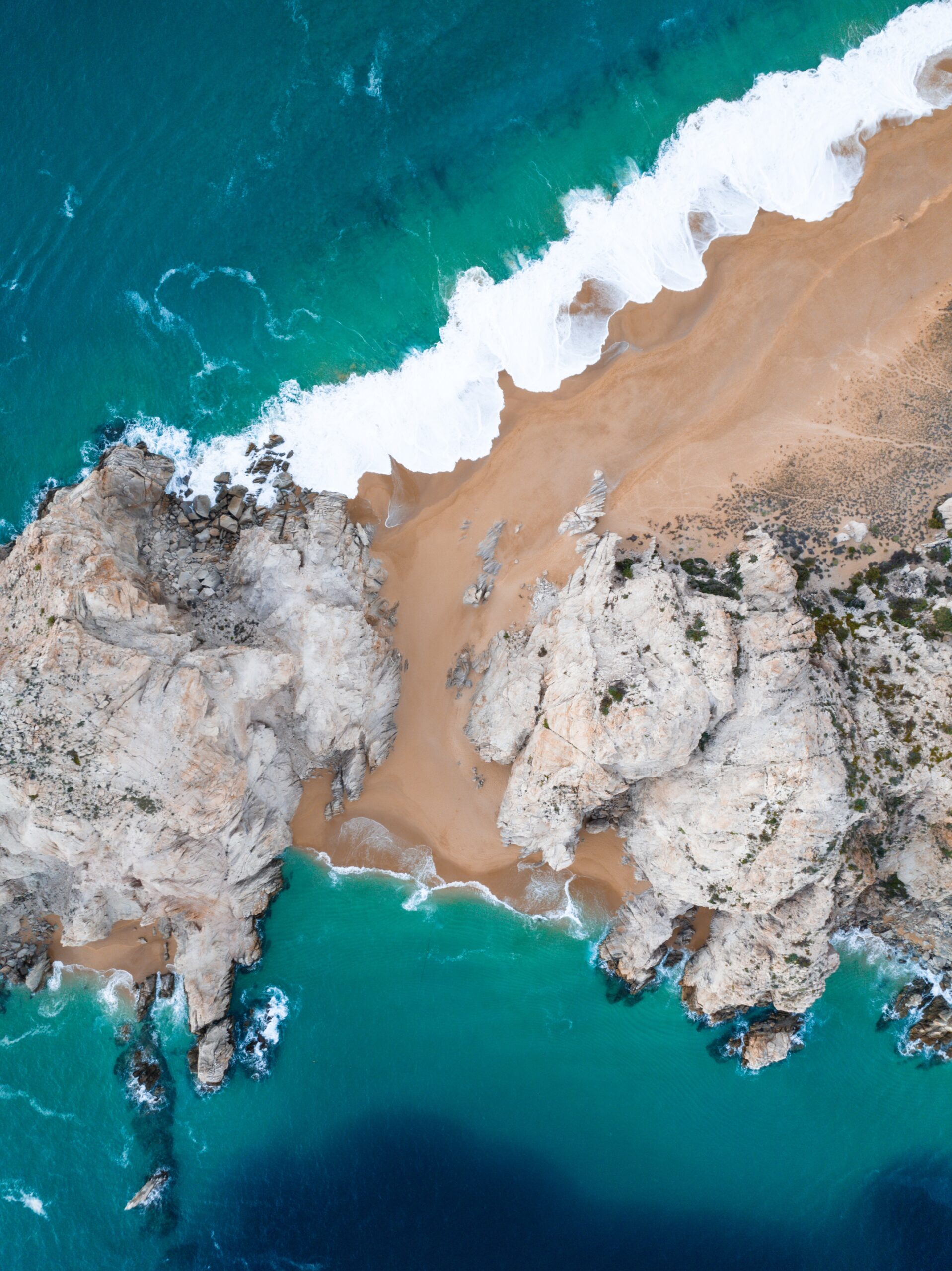
Discover land’s end of Baja California
Near to El Arco are the famous Lover’s Beach and its neighbor — jokingly called Divorce Beach. The 164-foot-long Lover’s Beach is a hidden cove. It is surrounded by stunning rock formations that protect it from view. The name either comes from its location where the seas meet, or from a tragic story about a Japanese sailor.
The sailor is said to have been shipwrecked in the 18th century and fell in love with a local girl. Lover’s Beach was where they spent their time together. The girl’s father was opposed to the relationship and killed the sailor. In complete despair, the girl went to the beach and took her own life.
Dive into Cousteau’s Aquarium of the World
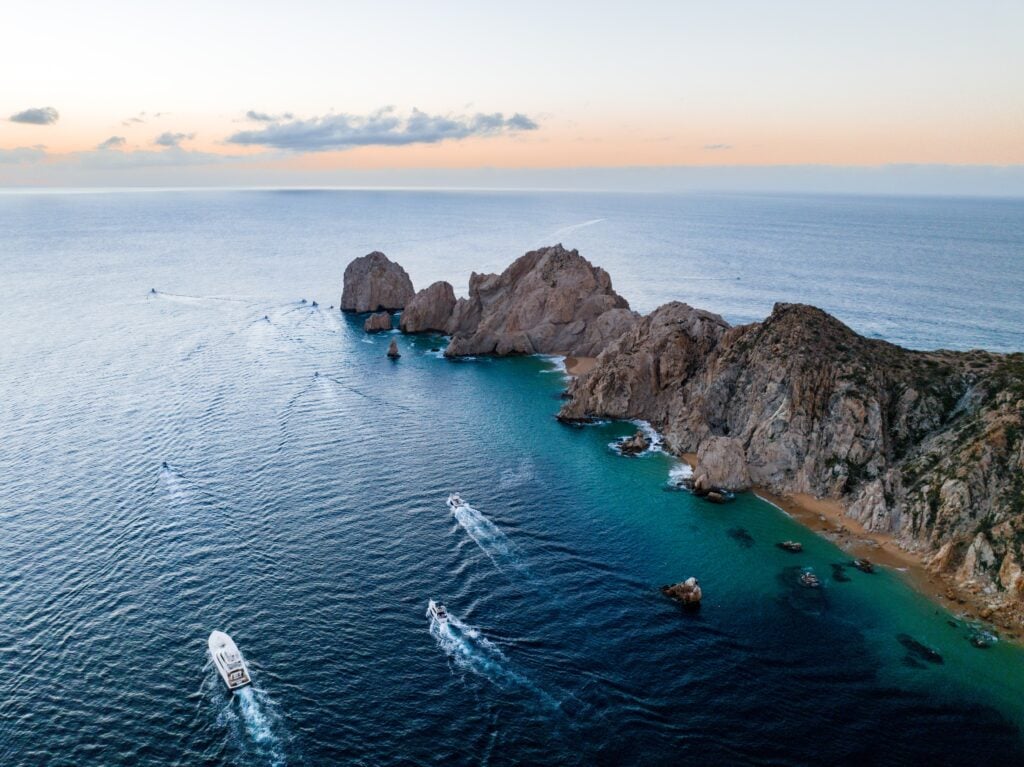
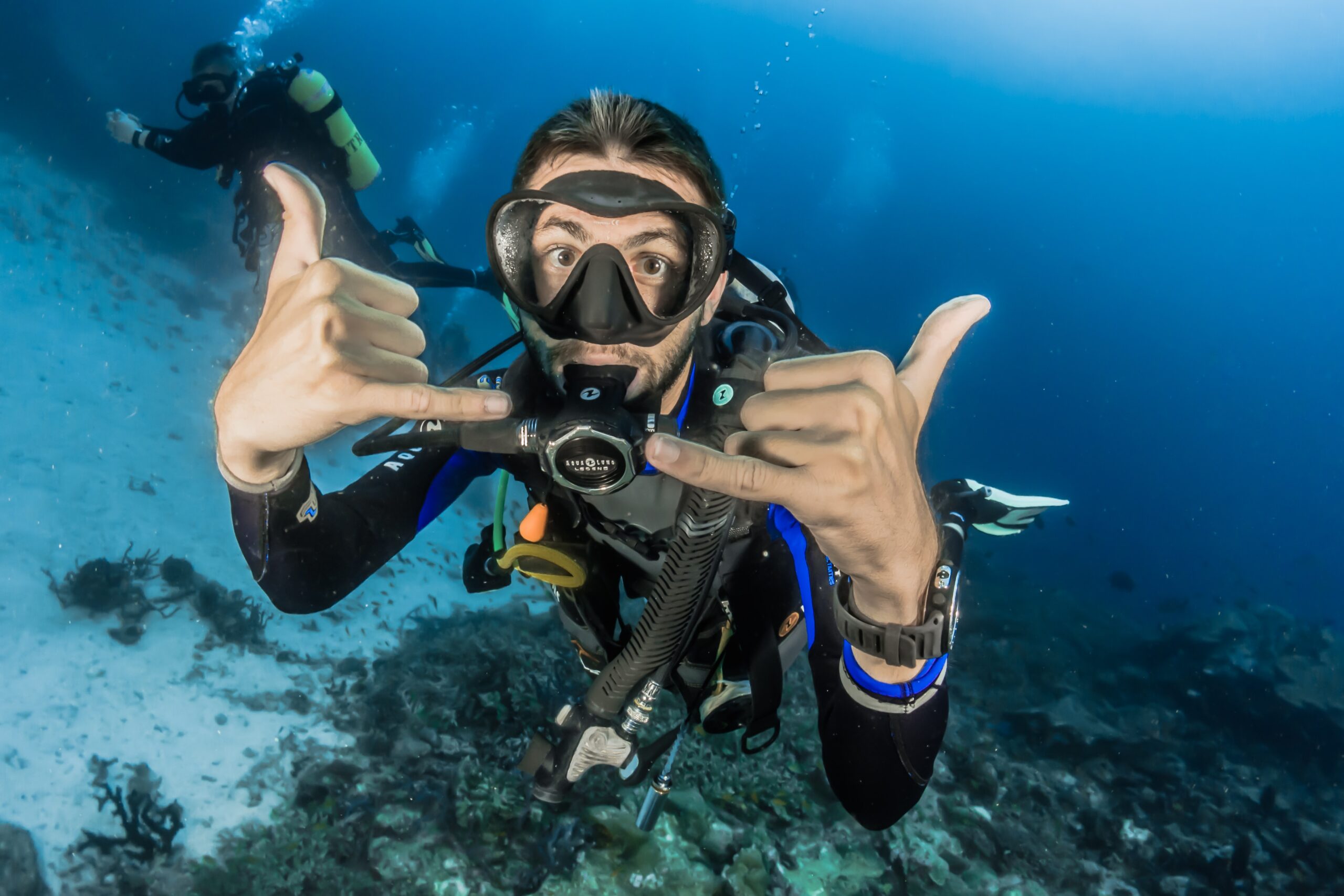
See the aquarium of the world from under the waves
While the waters off the beaches and El Arco are full of marine life waiting to be seen, you must be careful. If you plan on swimming and snorkeling, only do it in the Gulf of California off Lover’s Beach. The waves that crash onto Divorce Beach from the Pacific Ocean are large and strong, and only for the most adventurous or foolhardy.
Neptune’s Finger is another rock formation nearby. Almost 30 feet tall, this sea stack juts out of the ocean and can be seen from Lover’s Beach or by boat. It is a very popular site for diving. The dives here are suitable for higher skill levels and range between 30 and 100 feet. On a dive, you will see a range of corals, sea turtles and manta rays. There is other diving in the area which will suit a broader range of skills.
It was here that the Cousteau discovered the rivers of sand that flow deep under the water. These sand cascades can be found 100 feet under the surface at the edge of the shelf. It is an incredibly rare phenomenon that can only be seen in a few places in the world. The currents are pushing the sand out to sea, and as these flows reach the edge of the plateau they dramatically tumble over the edge.
